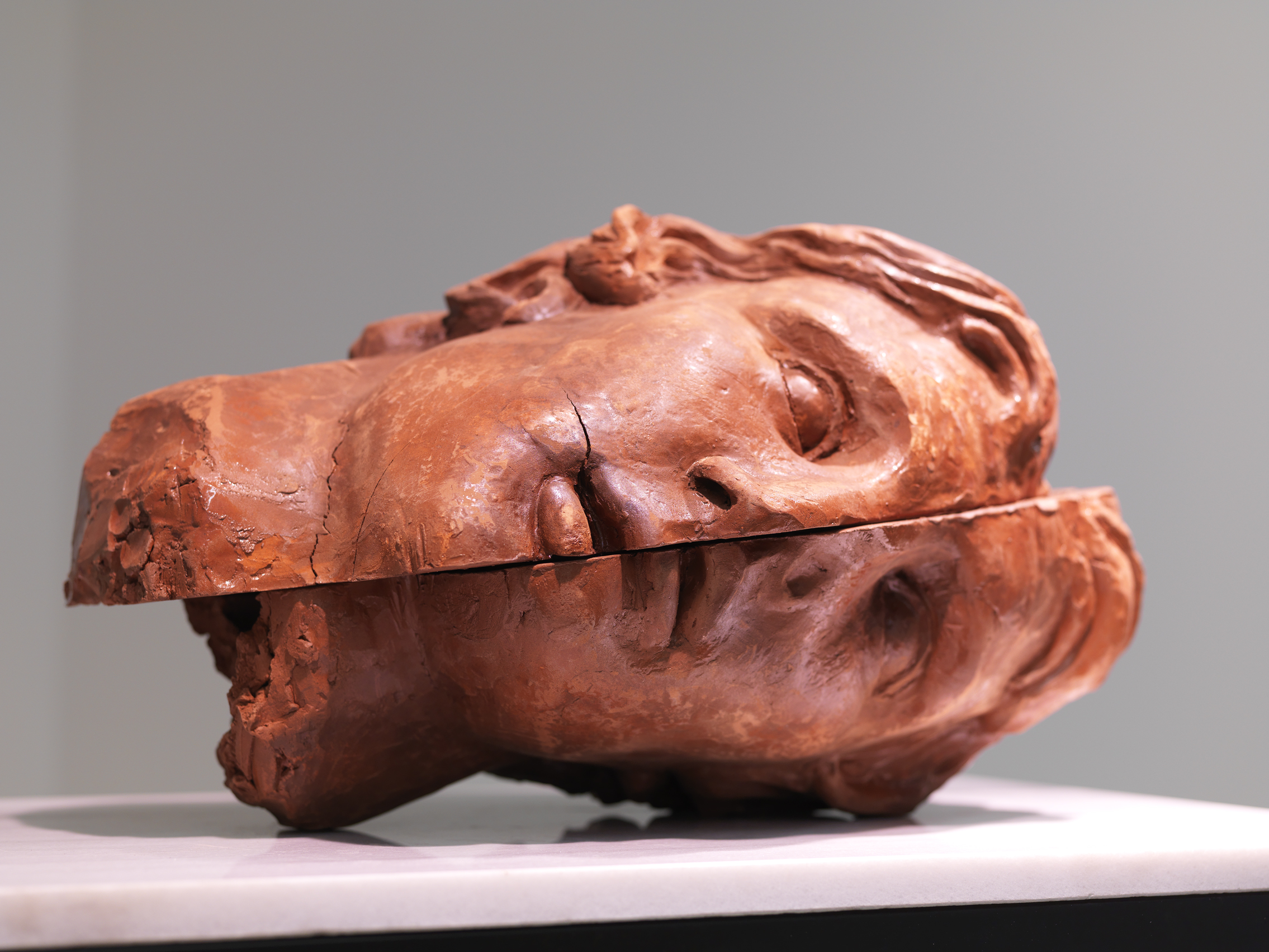Counsel for the month ahead.
September 2018

A dress from the autumn/winter 2014–2015 collection of the Dubai collective POSE/ARAZZI. Photo: Saaed Khalifa.
Contemporary Muslim Fashions
de Young Museum, San Francisco
Opens September 22
On September 13, New York state will hold its primaries for the midterm elections, and on the Democratic ballot for governor is Cynthia Nixon: longtime activist, early supporter of mayor Bill de Blasio, and actor. She has appeared in her share of fine pictures — you can read our endorsement in Even no. 6, which exalted her turn as Emily Dickinson in A Quiet Passion — but there’s one film that the candidate may not want to revisit. In Sex and the City 2, the fab four takes a junket to Abu Dhabi, and during their Orientalist gallivanting, featuring camel rides and servant seduction, the redheaded lawyer makes a close study of Emirati fashion for her three best friends. “The robes are called abayas,” Miranda tells them cheerfully, “and the veil that covers everything except the eyes is a niqab.” (Quick-witted Samantha: “Certainly cuts down on the Botox bill!”) Even if the cash Nixon earned from appearing in this atrocious movie helped fund her run for Albany, nothing can justify its shocking conclusion, in which the ladies meet a group of niqabis who wear the newest western designer clothes under their shapeless black robes. Islam is a mere encumbrance; your true self is in Vuitton.
Had the quartet first seen this timely exhibition, which examines the clothing choices of half a billion Muslim women, they might not have been so clueless when they got to the Gulf. Its curators bill it as the first major study of style’s intersection with religious dress codes, and it looks not just across the globe but across price points too; high-end designers like Faiza Bouguessa of Dubai, whose flowing shifts can be worn with or without an abaya, will appear with sportswear labels and fast-fashion brands. More than three-fifths of Muslims live in Asia, and thus the de Young show also includes labels like Malaysia’s Blancheur — it means “whiteness,” which we’re just going to let go for now — whose high-end telekungs feature hijabs that stretch to the knees. Closer to home is the Brooklyn label Slow Factory, whose head designer, Celine Semaan, has lately offered jackets sewn with the First Amendment in Arabic, or scarves silkscreened with the maps of the Muslim-majority nations affected by President Trump’s travel ban.
Exhibitions of fashion in art museums often turn populist, but we are optimistic about this one, which will also include Turkish and Kuwaiti women’s magazines, pictures from on-the-street-style blogs, and even couture dresses from western houses happy to cater to the tastes of Arab royalty. (The show was first pitched by Max Hollein, who’ll no longer be the director of the Fine Arts Museums of San Francisco when this show opens; in August, he starts his new gig as director of the Met.) More than the clothes, it’s the rhetoric of this show that seems most valuable; there is no easy opposition, it seems set to argue, between modesty and independence. In Sex and the City 2, when Carrie tut-tuts at a veil-clad Emirati in a hotel restaurant, Miranda retorts, “Younger Muslim women are embracing old traditions in new and personal ways.” She was always the smartest of them.

Tintoretto 1519–2019
Accademia and Palazzo Ducale, Venice
Opens September 7
New research ahead of this 500th birthday blowout has reattributed numerous canvases to Venice’s boldest painter, whose ectoplasmic whites and metallic oranges made Ruskin faint. The Accademia looks at the young Tintoretto, under the sway of Titian; at the palace in Piazza San Marco, you’ll find the massive murals of the mature artist. The shows fuse and tour to Washington in March 2019.

12th Gwangju Biennale
Gwangju, South Korea
Opens September 7
It may remain Asia’s most important biennial, but for the second time in four editions Gwangju has dispensed with a lead artistic director, instead divvying up responsibilities among 11 curators. We’ll see whether this suspicion of grand narratives leads to too-many-cooks syndrome, but one of its constituent mini-exhibitions sounds imperative: a showcase of large-scale North Korean painting, rarely seen in the South.

The Moon
Louisiana Museum of Modern Art, Humlebæk, Denmark
Opens September 13
Nearly 50 years after Neil Armstrong’s first small step, it now seems possible that no human will ever again walk the surface of our satellite. This broad-minded exhibition, uniting works of art with objects of natural science, will examine the mythology and the art history of the moon, a source of inspiration to artists as diverse as On Kawara and David Bowie.

Aslı Çavuşoğlu
New Museum, New York
Opens September 19
This brilliant young artist, born in Istanbul and interviewed in Even no. 5, looks to both the past and the future to clarify the rumbled Turkish present; she has exhibited scraps from archaeological digs and also consulted psychics to foresee a turkey after Erdoğan. For her first US museum exhibition, Çavuşoğlu is presenting new works that research the history of lapis lazuli, the pricy blue stone beloved of Renaissance painters and Taliban warlords.